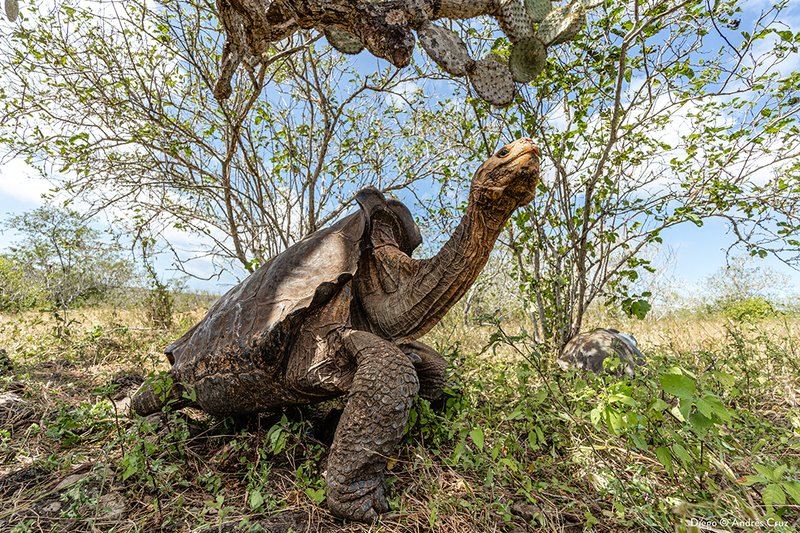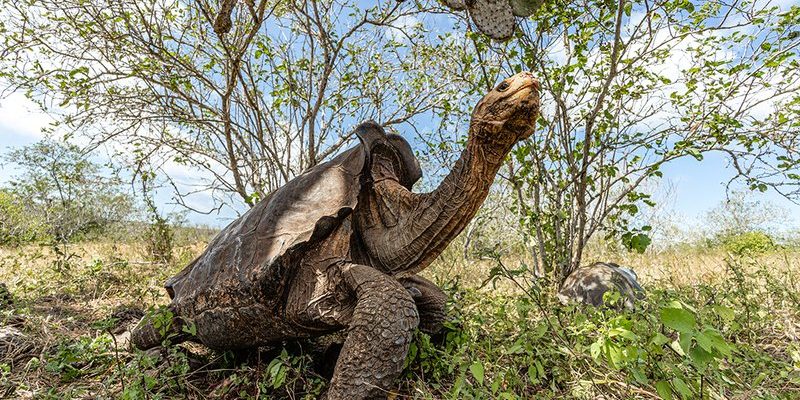
Honestly, if you’ve ever felt like you’re toughing it out in challenging circumstances, you might find a kindred spirit in these tortoises. Just like us, they’ve had to learn how to navigate their world, but they do it in their own delightful, tortoise-y way. In this article, we’ll explore the fascinating ways the Galápagos tortoise manages to survive and even thrive despite the odds stacked against it.
Adapting to Limited Water Supply
One of the toughest challenges for the Galápagos tortoise is the limited supply of fresh water. The islands don’t get a ton of rain, which means these tortoises have to be smart and resourceful. They’ve evolved to store water in their bodies—kind of like a built-in water bottle!
When it rains, they take full advantage, soaking up as much water as they can. They can go months without drinking, relying on the moisture from the plants they eat and storing whatever little water they manage to collect. This ability to conserve water is crucial, especially during dry spells.
You might be wondering how they know when to take a sip or when to wait it out. Well, these tortoises have an incredible sense of instinct that helps them locate water sources. They’ll even dig down to find underground water when it’s desperately needed. Talk about resourcefulness!
Dietary Resilience: Eating What’s Available
Galápagos tortoises are herbivores, munching on a varied diet that depends heavily on what’s in season and available. They feast on grasses, cactus pads, and even the leaves of shrubs. But here’s the kicker: their diet is flexible. They’re not picky eaters. This adaptability allows them to thrive in environments where food might not always be plentiful.
Imagine having a buffet of options but only being able to choose from what’s on the menu each day. These tortoises make the best of it! Their strong jaws and beak-like mouths allow them to tear through tough plant material, giving them access to nutrients even when the pickings are slim.
Furthermore, their ability to go long periods without food is impressive. They can fast for several months if necessary. This means they can conserve energy during dry spells when food is hard to find. It’s all about strategizing what’s best to keep going strong.
Utilizing Their Shells for Survival
The shell of the Galápagos tortoise isn’t just for show; it’s a vital part of their survival. Think of it as a portable fortress. The shell provides protection from predators, harsh weather, and even helps in regulating their body temperature.
When the sun blares down, they can tuck into their shell for some shade, keeping themselves cool. Conversely, during chilly nights or in colder months, they can close themselves off in their shells to retain warmth. It’s like having a cozy home that you can take with you wherever you go!
Interestingly, the shape of their shell also varies among the different species of Galápagos tortoises, adapting to their specific island environments. Some have dome-shaped shells, while others have saddle-back shells, allowing them to reach higher vegetation. This unique trait is a clever adaptation to their surroundings.
Slow and Steady Wins the Race
While we often associate slowness with laziness, for the Galápagos tortoise, it’s quite the opposite. Their slow pace is a survival strategy that plays into their energy conservation. They don’t need to rush around looking for food all day. Instead, they take their time, grazing slowly and methodically.
You might think that being slow could make them an easy target for predators. However, their size and tough shells give them an edge. Most predators would find it a hefty challenge to take on a fully grown tortoise, and their slow movements often allow them to stay hidden in the grass or brush.
Plus, their long lifespan—some live to be over a hundred years old—means they have plenty of time to find the resources they need. Slow and steady is not just a cute saying; it’s a way of life for these remarkable creatures.
Social Behavior and Adaptation
Galápagos tortoises are known to be somewhat social. They don’t form tight-knit groups like some other species, but they often bask together in the sun or forage nearby. This social behavior helps them learn from one another, especially when it comes to finding food or locating water sources.
Observing other tortoises can be a good strategy. If one has found a patch of delicious cactus, others can follow suit. Also, their interactions help maintain healthy genetics. By mixing, they enhance the chance of stronger, more adaptable offspring.
Interestingly, younger tortoises tend to be more secretive and hide from larger tortoises, reducing competition and safeguarding themselves from potential threats. This kind of behavior reflects their instinct to adapt, ensuring that even in a harsh environment, there’s a strategy for survival.
Conservation Challenges and Efforts
Even with all these impressive adaptations, the Galápagos tortoise faces serious challenges. Human activity has drastically affected their habitats, leading to a decline in their numbers. Invasive species, such as rats and goats, have threatened their survival by competing for food and preying on young tortoises.
But here’s the good news: conservation efforts are underway! Organizations are actively working to restore habitats and control invasive species. The Galápagos National Park has implemented strong regulations to protect these incredible creatures and their ecosystem.
You might find it fascinating that breeding programs have been established to help bring numbers back up. The work being done is a testament to how dedicated people can help turn the tide for endangered species. It’s a reminder that just like the tortoises, we too have the capacity to adapt and overcome challenges.
The Galápagos tortoise is more than just a symbol of resilience—it’s a living testament to adaptability in the face of adversity. Through their water-storing abilities, diverse diet, protective shells, and social behaviors, they’ve found ways to not just survive but thrive in their unique environment.
As we learn from their journey, it’s clear that every creature has its own story of survival. The Galápagos tortoise reminds us of the importance of respecting our natural world and the need to protect these magnificent beings. Just like them, we have the potential to adapt and find solutions to the challenges we face. Let’s celebrate their legacy and work together to ensure their survival for generations to come.

